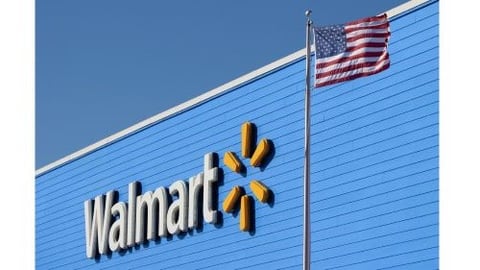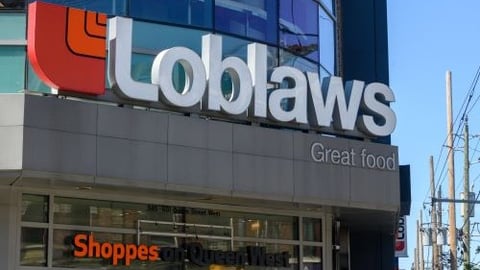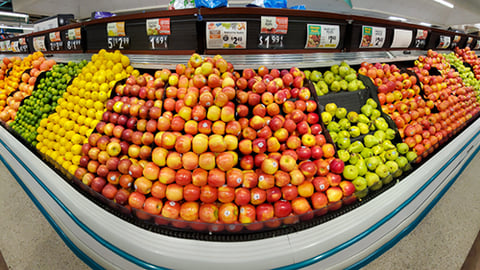EDITOR'S NOTE: Local Has Never Mattered More
I don’t know about you but I’ve been spending an unnatural amount of time staring at tanker trackers: apps with real-time data showing that cargo volumes at U.S. ports are undergoing a drop in container traffic not seen since the pandemic.
The drop in cargo volume is just one way that President Trump’s trade war is going to affect the U.S. grocery industry, by way of disrupted supply chains. But I also worry about retailers bearing the brunt of price hikes on everything from takeout containers to Fourth of July decorations to Peruvian blueberries – and how they might pass those costs on to shoppers.
[RELATED: How Tariffs Could Hurt America's Independent Grocers]
Will this inflationary cycle ever end? While the U.S. Treasury Secretary has predicted a “de-escalation” in the trade war “soon,” it’s a good time to remember there is a way forward through these times even if inflationary tariffs persist. And that is by doubling down on products made locally, regionally or in the USA.
Grocers have long known that shoppers love finding products that feel custom-merchandised for them. Whether it’s local produce, regional specialty items, or culturally relevant goods, a hyper-local assortment tells customers, "We know what you like." That emotional resonance can elevate a store from being a commodity supplier to a trusted community fixture. And especially during these times of predicted supply shortages and price hikes, more shoppers may be looking for “Made in the USA” products than ever before.
Retailers leading in this area include giants such as Whole Foods Market and Kroger, as well as regional players such as Big Y Foods, Whole Food Markets, H-E-B and Publix. Many have invested heavily in store-specific planograms, data-driven ordering systems, and empowered buyers to fine-tune offerings based on real-time customer feedback. Another good idea I’ve seen recently is signage or guides that show consumers “how to buy local.”
Here’s a recap of what some of these retailers are doing:
1. Big Y Foods
Each year, Springfield, Massachusetts-based Big Y Foods hosts an annual Local Vendor Partner Appreciation Luncheon to celebrate the retailer’s local partnerships and honor a few special partners that go above and beyond. The company partners with over 500 local businesses and carries over 4,000 individual local products. These items can be found across every department in stores across the chain. “Local products help to keep our local communities thriving and growing,” said John Fraro, VP of Fresh Foods. “We pride ourselves on working with local partners and carrying products that are unique to the regions where our stores are found,” he added.
2. H-E-B
San Antonio, Texas-based H-E-B is often considered the gold standard for hyper-local merchandising. Their stores are finely tuned to each Texas community they serve, offering locally made products, regional flavors, and even different store formats (Central Market for upscale urban areas). H-E-B heavily supports local farmers, ranchers and food producers. Products labeled "Texas Proud" are sourced directly from Texas vendors, and stores in border towns have distinct Hispanic assortments compared to Hill Country stores.
3. Publix
Lakeland, Florida-based Publix is a master of localizing its offerings across the Southeastern United States, tailoring store layouts and product selections to the demographic and cultural preferences of each location. They actively adjust bakery items, seafood selections, and even seasonal goods based on local demand. Stores in coastal Florida offer extensive fresh seafood and Cuban pastries, while stores in Georgia might highlight Southern specialties like peach products and regional barbecue sauces.
4. Kroger
Cincinnati, Ohio-based Kroger leverages customer data from its loyalty program to localize inventory at the store level. They also run “local vendor” programs to bring regional brands into stores. In Cincinnati, you might find regional favorites like Skyline Chili on Kroger shelves, while Colorado stores emphasize local craft beers and Rocky Mountain region produce.
5. Wegmans
Rochester, New York-based Wegmans customizes its stores heavily based on local demographics and preferences. Their locations often feature hyper-local produce, regional prepared foods, and specialty items that resonate with community tastes. In upstate New York, Wegmans features apple varieties and dairy products from local farms, while their Maryland stores emphasize Chesapeake Bay seafood.
6. Whole Foods
Austin, Texas-based Whole Foods Market has preserved a strong commitment to local sourcing through its "Local Producer Loan Program" and robust regional buying offices. Each store spotlights local artisan foods, produce, and packaged goods. Whole Foods stores in the Pacific Northwest offer local kombucha and wild-caught salmon, while Texas stores might highlight locally made salsas and beef.
As grocery retailers navigate the uncertainty ahead, they should be thinking locally more than ever before (and maybe retraining some shoppers), one neighborhood at a time.






